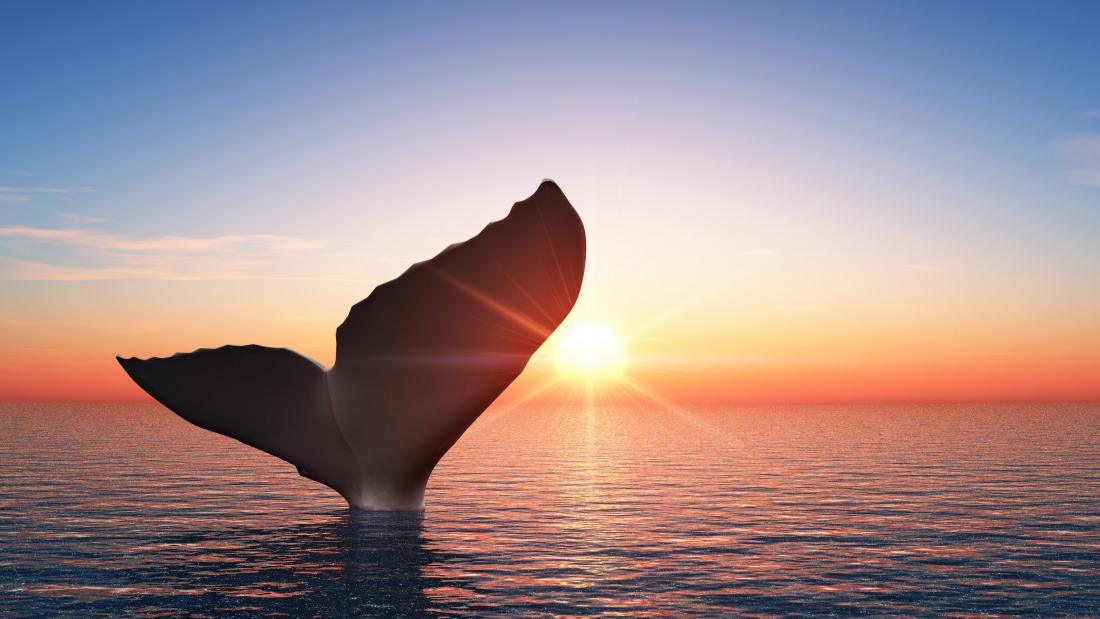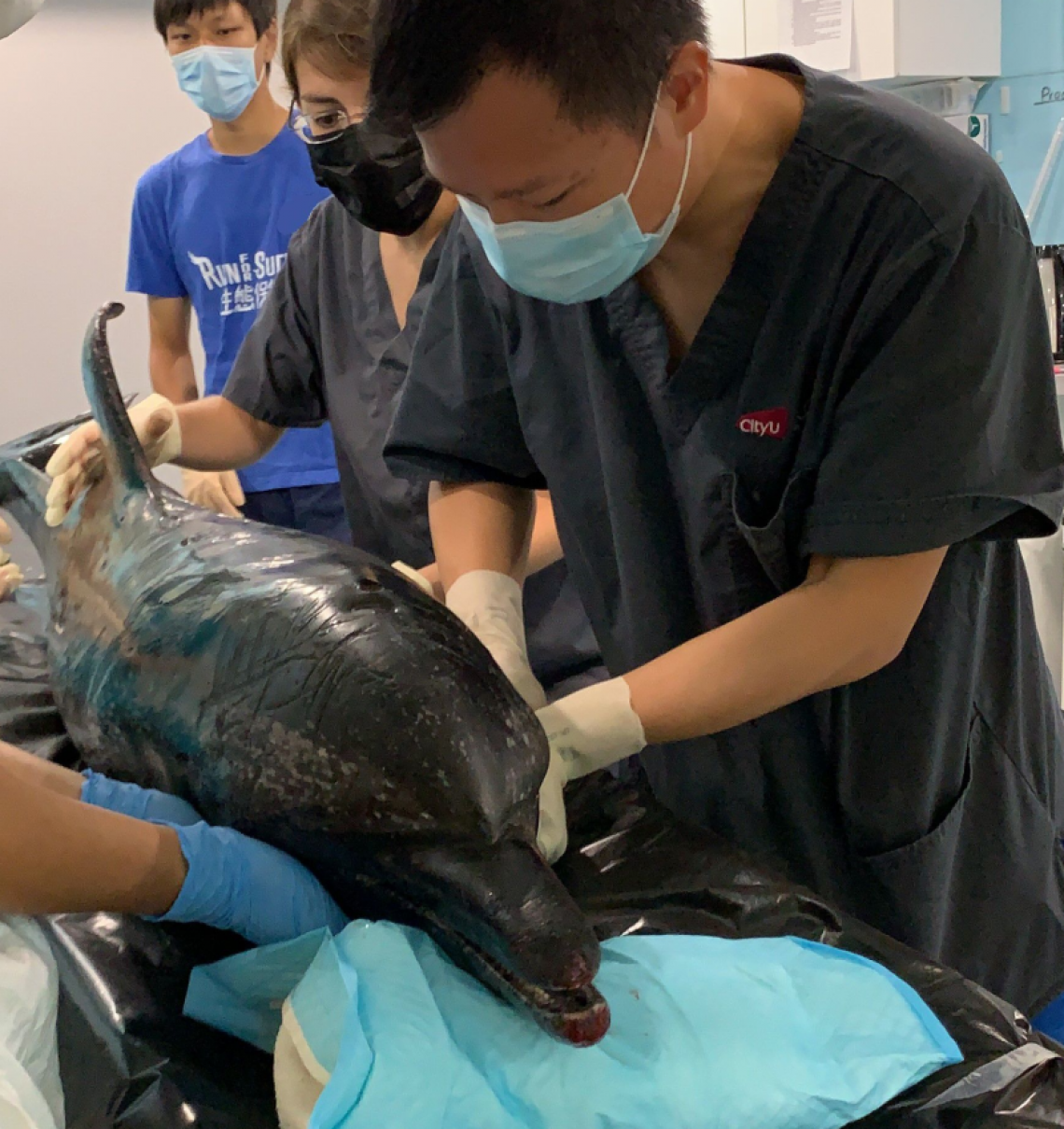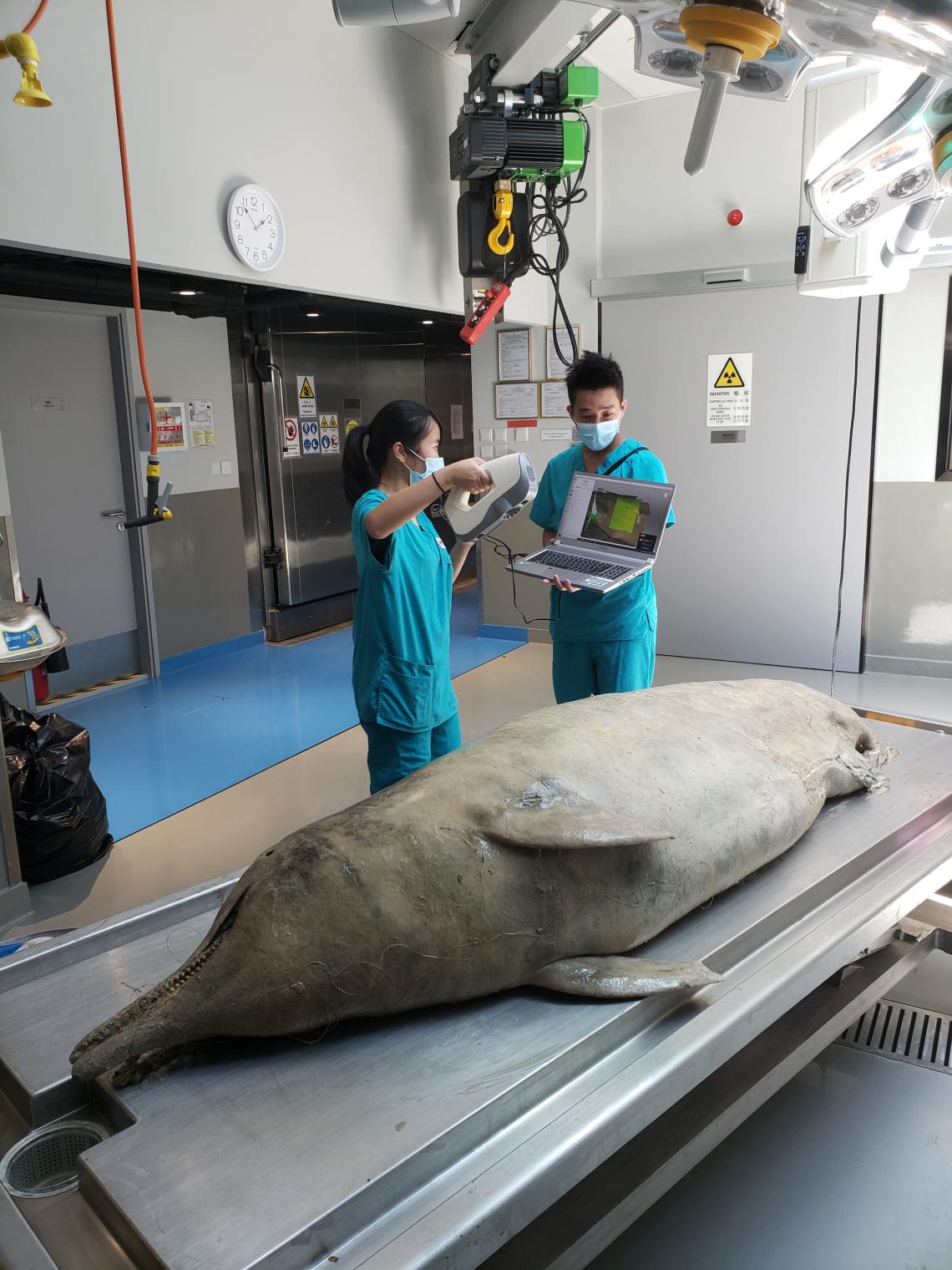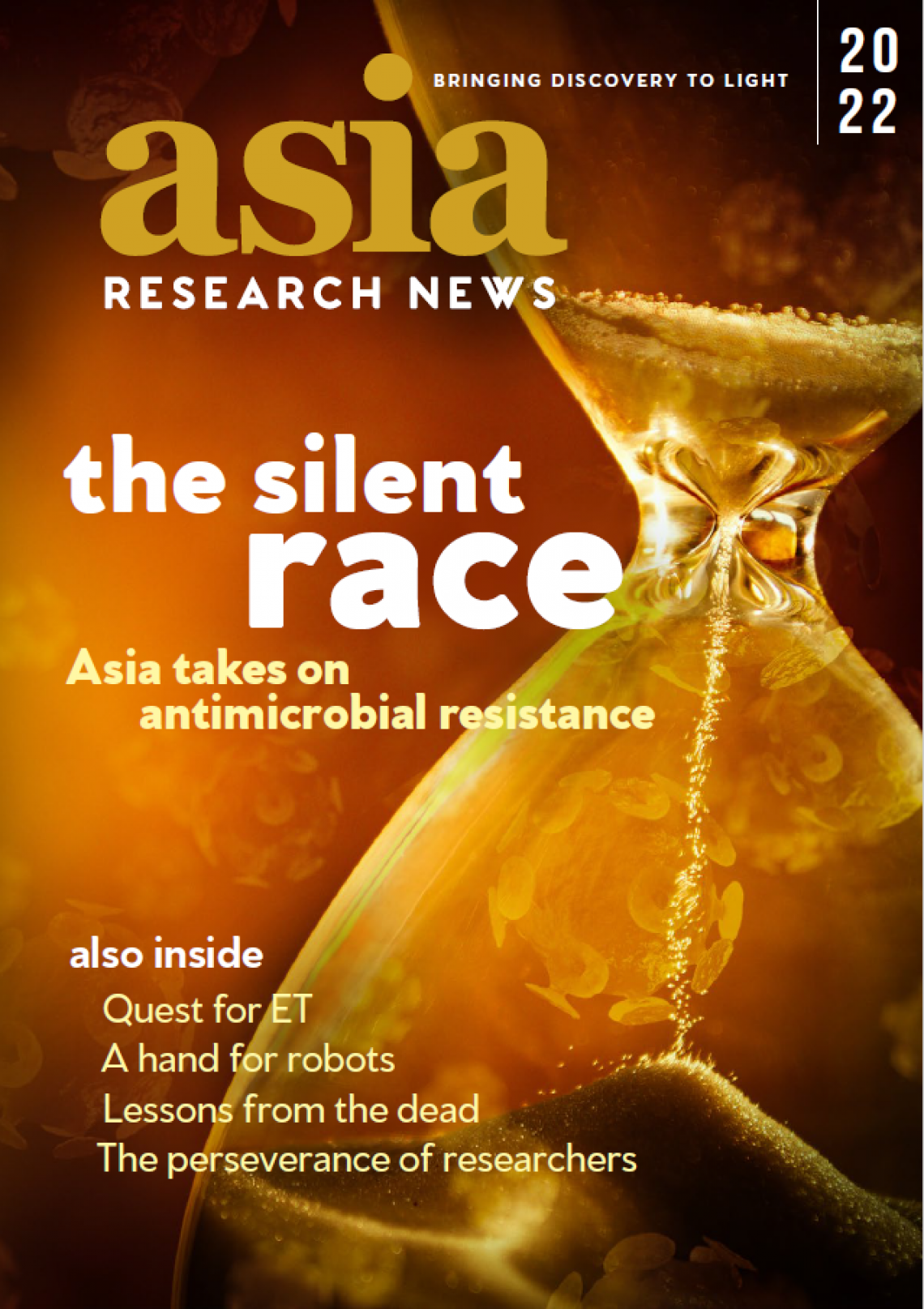This story is featured in the Asia Research News 2022 magazine. If you would like to receive regular research news, join our growing community.
Get the news in your inbox
Researchers at City University of Hong Kong have developed a new, non-invasive imaging approach to examine the remains of beached marine mammals, like whales and dolphins. The approach, called virtopsy, was described in the journal Frontiers in Marine Science and can be used to determine the cause of death. It can also gather useful information about the animal before it died, such as its general health, as well as if it suffered human impacts, such as vessel collision or marine pollution.
These findings could help governmental agencies and stakeholders across the world implement more effective marine conservation policies to protect vulnerable marine mammals.
Virtopsy uses modern imaging techniques to examine dead marine mammal remains. It is performed before conventional necropsy, the animal equivalent of human body-opening autopsies, or can even replace it in some cases.
“Virtopsy appears to be more accurate, time-saving and non-invasive compared to conventional necropsy, with less risk of disease contraction for veterinarians and human rescuers,” says CityU radiological clinician Brian Chin-wing Kot.
In Hong Kong, marine mammal remains are often found badly decomposed on beaches, making conventional necropsies very difficult. Virtopsies provide an effective alternative to examine external and internal structures.
Kot’s team has carried out virtopsies on beached marine animal carcasses since 2014. The Cetacean Virtopsy-driven Stranding Response Programme is conducted in collaboration with the Hong Kong Agriculture, Fisheries and Conservation Department, Ocean Park Corporation, and Ocean Park Conservation Foundation Hong Kong.
The team uses modern imaging techniques to examine dead marine mammal remains.
Kot and his team have performed virtopsies on more than 200 beached marine mammals using post-mortem computed tomography (PMCT) and post-mortem magnetic resonance imaging (PMMRI). The work shows that PMCT identifies bone lesions, foreign bodies, pathological gas formation and organ trauma better than conventional necropsy. PMMRI is better at identifying soft tissue injury, organ trauma and non-traumatic pathology.
The team also found that PMMRI provides more information on decomposed brains than PMCT. Additionally, it should be used in conjunction with PMCT to detect soft tissue lesions and brain pathologies, as PMMRI alone is more prone to showing unwanted artefacts from gas and foreign bodies.
“Our study is a valuable reference for other stranding response programmes worldwide that are interested in integrating virtopsy or other modern diagnostic modalities into their routine workflow,” says Kot. “We hope our research helps humans realise a 'One Ocean, One Health' ideal,” a concept that promotes the understanding that human, animal and environmental well-being are interconnected.
The team is now expanding its work by partnering with governmental organizations and academic institutions in mainland China, Japan, Taiwan, Thailand, New Zealand, Switzerland, Costa Rica and the US for cetacean and sea turtle stranding investigations worldwide.
Further information:
Dr Brian Chin-wing Kot
E-mail: [email protected]
Department of Infectious Diseases and Public Health
City University of Hong Kong
We welcome you to reproduce articles in Asia Research News 2022 provided appropriate credit is given to Asia Research News and the research institutions featured.






